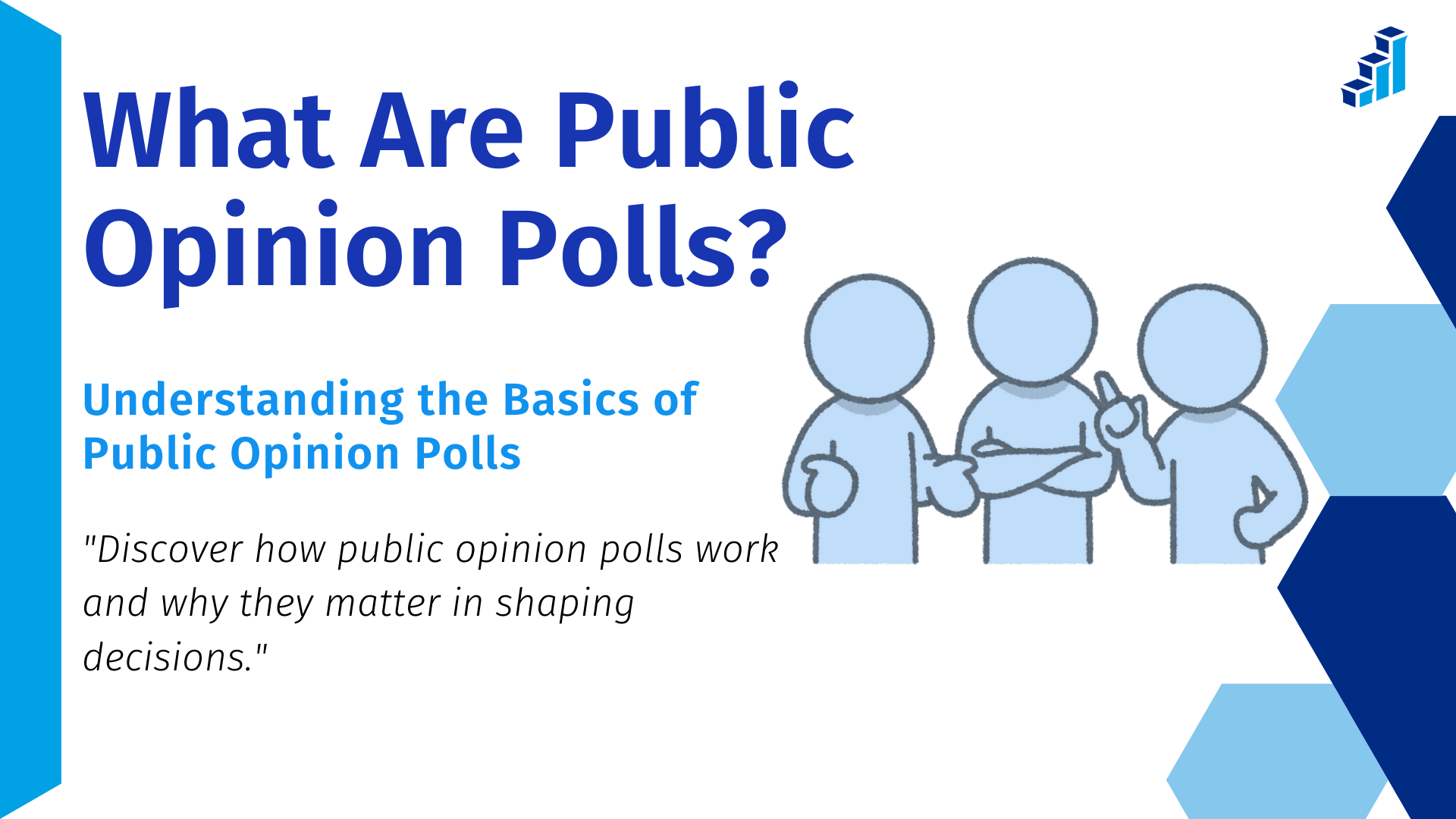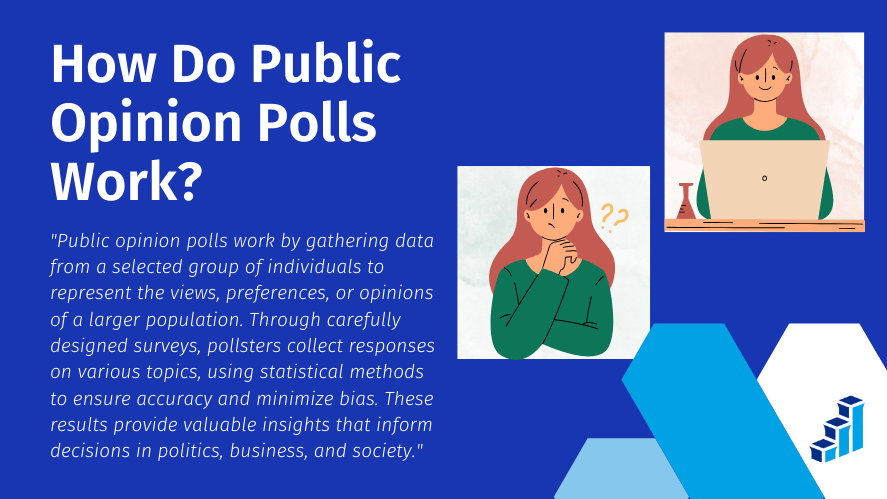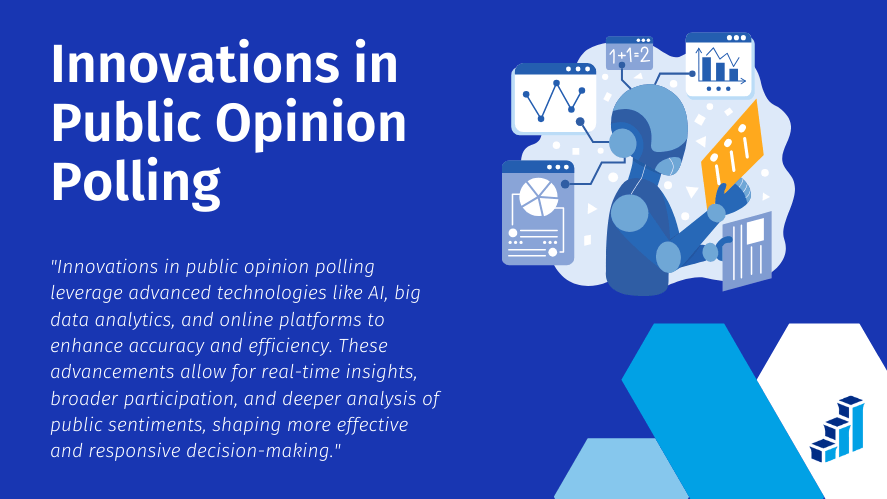
What Are Public Opinion Polls? Everything You Need to Know
Public opinion polls are tools used to find out what people think about specific topics. What are public opinion polls, and why are they so important? These polls help governments, businesses, and media make better decisions by understanding public opinions. With the help of tools like Polling.com, polling has become faster, easier, and more reliable.
What Are Public Opinion Polls?
The Meaning and Purpose of Public Opinion Polls
Public opinion polls collect opinions from a group of people to understand what they think. The information from polls helps leaders, businesses, and researchers make decisions that fit public needs.
For example, a political poll might ask people which candidate they support in an election. A business poll might ask customers if they like a new product. These polls give clear data that can guide decisions.
The History of Public Opinion Polls
Public opinion polling started in the 1800s with simple “straw polls,” which were not very accurate. In the 1930s, George Gallup introduced methods like random sampling to make polling more scientific. Today, polls are faster and more reliable thanks to technology, including online surveys and social media polls.
How Do Public Opinion Polls Work?

How Pollsters Collect Opinions
Sampling Techniques for Public Opinion Polls
Pollsters can’t ask everyone in a population, so they select a smaller group called a sample. This sample should represent the larger population.
- Random Sampling: Each individual in the population has an equal likelihood of being selected.
- Stratified Sampling: Groups like age, income, or location are included to ensure diversity.
Why Accurate Sampling Matters
If the sample is not diverse or large enough, the poll results won’t reflect the opinions of the whole group. This makes it hard to trust the results.
Different Ways to Conduct Public Opinion Polls
Pollsters use several methods to gather data:
- Quantitative Polls: These include surveys or forms with simple yes/no questions or rating scales.
- Qualitative Polls: These involve focus groups or interviews where people discuss their thoughts.
- Digital Polling Methods: Online and social media polls are quick and cost-effective, making them popular.
Platforms like Polling.com simplify these processes and help pollsters gather opinions accurately and quickly.
How Are Public Opinion Polls Used?
In Politics: Using Polls to Shape Decisions
Politicians use polls to learn what voters care about. These polls help create campaigns, adjust speeches, and decide which policies to focus on. For example, election polls can show which candidate is ahead, while approval ratings measure how popular a leader’s decisions are.
In Business: Listening to Customer Opinions
Businesses use polls to understand what customers like or dislike. This feedback helps companies improve their products and marketing.
Example: A coffee shop might ask customers which new drink flavors they prefer before launching a new menu.
In Media: Tracking Trends and Social Opinions
Media outlets use public opinion polls to report how people feel about current events or trending topics. For instance, a poll might show how the public views climate change or a new government policy. This data helps media provide more relevant content.
What Are the Benefits of Public Opinion Polls?

How Polls Help Organizations
Organizations get many benefits from public opinion polls:
- Better Decisions: Polls give accurate information, so organizations don’t have to guess.
- Effective Marketing: Polls help businesses target their audience more effectively.
- Early Problem Solving: Polling can identify issues before they become big problems.
Why Polls Are Good for the Public
Polls also benefit the public in meaningful ways:
- Sharing Opinions: They give people a way to express their thoughts on important topics.
- Encouraging Engagement: Polls help people take part in conversations about politics, products, and social issues.
The Value of Polls for Researchers
Researchers use public opinion polls to learn about social behaviors, trends, and cultural changes. This data helps them study and understand society better.
Challenges in Public Opinion Polling
Bias in Sampling
A major challenge in polling is bias. If certain groups are left out of the sample, the results may not reflect everyone’s opinions. For example, an online poll might miss older adults who don’t use the internet.
Poorly Designed Questions
Confusing or biased questions can lead to unreliable answers. Pollsters must write clear, neutral questions to get accurate data.
Technology Gaps
While digital polling is fast and easy, it excludes people who don’t have internet or smartphones. This limits participation from some groups.
Innovations in Public Opinion Polling

How AI Improves Polling
Artificial intelligence (AI) makes polling faster and smarter. AI can analyze large datasets, such as social media posts, to identify trends and public emotions.
The Rise of Mobile Polling
Smartphones make polling more convenient. Mobile surveys allow more people to participate, especially younger audiences, making polling more inclusive.
Modern Polling vs. Traditional Methods
Traditional polling, like door-to-door surveys, is slow and expensive. Modern methods, like online and mobile polling, are faster, cheaper, and reach more people.
How to Understand Poll Results
What Margins of Error Mean
Poll results are not perfect. The margin of error shows how much the results might vary. For example, if 70% of people support an idea with a ±3% margin, the real number could be anywhere from 67% to 73%.
Context Matters in Polling
A single poll cannot tell the full story. It’s important to look at multiple polls and trends to understand the bigger picture.
Trends Are More Reliable Than One Poll
Repeated results across different polls are more trustworthy than one-time outcomes. Trends show clear patterns and are easier to rely on.
Tips for Conducting Effective Public Opinion Polls
- Write Clear Questions: Avoid confusing or biased wording.
- Pick the Right Sample Size: A larger, diverse sample leads to better results.
- Use Trusted Polling Tools: Platforms like Polling.com make it easier to create and analyze polls accurately.
Frequently Asked Questions (FAQs)
What are public opinion polls? They are tools used to collect people’s thoughts on specific topics.
Are public opinion polls reliable? Polls are reliable when they have a good sample size and clear, unbiased questions.
What are common types of public opinion polls? The most common types include political polls, customer surveys, and social issue polls.
What challenges do pollsters face? Challenges include biased samples, unclear questions, and low response rates.
How has technology improved public polling? Technology, like online surveys and AI, makes polling faster and more accurate.
Can polls predict outcomes? Polls show trends but can’t guarantee results because opinions can change.
Why are some polls criticized? Critics point to biased sampling or misuse of poll results by the media.
Conclusion
Public opinion polls are essential tools for understanding what people think. They help governments, businesses, and researchers make better decisions. However, polls must be done carefully to avoid bias and ensure accurate results. Platforms like Polling.com make it easier to create effective polls and gather reliable data.
If you’re ready to learn what your audience thinks, try Polling.com today!
